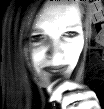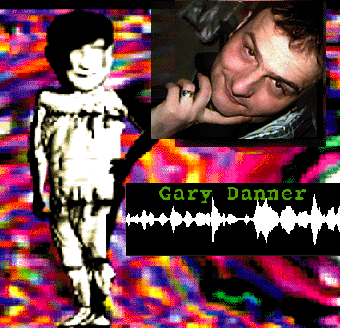 Issue04
Issue04
written by May 96
May 96
 1996 has been a busy year for Gary Danner & Elisa Rose so far.
Among their numerous activities are the preparations for a new audio-release.
A nice opportunity for me to throw a light on the aspects of sound &
music in the multimedia-concept of Station Rose. Just dive in and have fun.
And don´t forget to check out Gary´s great
soundpage!
1996 has been a busy year for Gary Danner & Elisa Rose so far.
Among their numerous activities are the preparations for a new audio-release.
A nice opportunity for me to throw a light on the aspects of sound &
music in the multimedia-concept of Station Rose. Just dive in and have fun.
And don´t forget to check out Gary´s great
soundpage!
THIS MONTH`S NEWS:
- From band to multimedia-duo: A short
musical history of Station Rose
- 5 seconds of eternity: Sounds for the
Internet
THIS MONTH`S NEWS IN DETAIL:
Psychedelic Techno: sound & music in
the multimedia-concept of Station Rose
- Sound & music are a very complex affair. Especially with
Station Rose who often combine their audio-tracks with digital visuals:
on CD-ROM, on CD-Extra & in the World Wide Web. It has been a long way
from seventies analogue performance art to nineties post-techno culture...
From band to multimedia-duo: A short
musical history of 
Gary Danner is the musical head of Station Rose.
He started as a guitar player in various bands in Vienna. For Gary the most
important of his bands was The Vogue (1978-81),  "the
last real sixties band". Why?
"the
last real sixties band". Why?
"Because in 1978 this band already anticipated the music later played
by bands like Psychedelic Furs, TV Personalities and The Go-Betweens: Neo
Psychedelic Pop, the post modern way."
- Yet it wasn´t The Vogue but a different band from Vienna who introduced
Gary to Elisa Rose. It was 1983, and this band was playing at a fashion
performance created by Elisa. Gary and Elisa got together turning their
"fashion-show + punk band" experience into a (still analogue)
multimedia concept. Later on they opened the first Station Rose.
- Gary started producing loops with a drum machine and a tape recorder.
In 1985 he bought his first sampler, a "Prophet 2000", and put
his guitar aside. The very last time he touched the chords was during a
recording session for the 1987 LP of Der Plan, "Die Peitsche des Lebens"
("The Whip of Life"). After that he was heading towards digital
production.
Although it was an electronic movement, Gary never liked EBM: "Too
much singing, too much of a band attitude - a rock concept, actually!"
Much more important were the kicks he got from the 1988 acid-house movement,
which later on exploded into techno culture. But Vienna was far from ahead
of its time. Thus at the beginning of the nineties Elisa & Gary moved
to German techno capital Frankfurt, where they started producing tracks
(e.g. "Digit Eyes") and regularly celebrated their "Gunafa
Clubbing" multimedia events at cult club "XS".
During these "Gunafa Clubbing" events Station Rose continued performing
the "Public Brain Sessions" they had started back in Vienna in
1989. "Public Brain Sessions" are operating with Theta frequencies,
which are generated by the human brain during deep sleep & trance. At
the climax of the early nineties mindmachine craze Station Rose were trying
to lead the club visitors into a collective ecstasy. And sometimes it worked
! In 1993, however, Station Rose stopped these "sessions". After
5 years they had lost attraction. But Public Brain Session is still in their
mind.
In any case their moving to Frankfurt turned out to be the right decision
for Gary Danner & Elisa Rose. It was in their new home town where they
found the adequate environment for their extravagant live events, innovative
CD-ROM productions and spectacular internet projects. Today they have established
themselves as one of Europe´s leading multimedia duos.
 Music à la Station Rose
Music à la Station Rose
- Ask Gary Danner for the most important influence on his musical career,
and he will answer: "Psychedelic US acid punk of the sixties, as it
is featured on the famous `Pebbles´- and `Nuggets´-compilations."
Acid punk has left a mark on the music he played back in Vienna - and it
is still leaving marks on his tracks for Station Rose. In Gary´s eyes
this influential musical style returns in cycles - "only the technical
side changes. At the end of the eighties they called it acid house, now
they call it intelligent techno. All these styles have got the same kick,
the same rough flair. And if you regard the lo-fi sounds you have to produce
if you want to send your music quickly through the world wide web you hear
nothing else than the sound of sixties acid punk or eighties acid house."
Between the fascinating sounds of the early nineties and recent internet
sound performances lies the downfall of techno. "In the beginning",
Gary says, "I was fascinated by techno´s facelessness and its
psychedelic monotony. It was punk." But then techno discovered "hi-end
production, mass media and the cult of personality." Which caused the
same damage as the linear arrangement and the concentration on audio production
did.
From the beginning Station Rose were transcending the production of sound
and music. They are interested in switching identities and realities.
- Sounds, rhythms and melodies are almost always combined with digital
visuals - the result is moving fast and often changing shape. And it is
fond of quoting.
Brevity, quickness and a strong affinity with Pop Art are other important
elements in the Station Rose concept. Regarding a cd-track, Gary Danner
appreciates "a Beatles-like playing time of between 3.30 and 3.50 min."
And he names three more influences on his music: Frank Zappa, The Residents,
and Martin Denny. Every Zappa record between "Absolutely Free"
and "Uncle Meat" was overloaded with compository miniatures and
changes of style. The Residents were commenting their situation as artists
without airplay by presenting their music in the shape of short commercial
jingles or mini symphonies. And cult composer Martin Denny didn´t shy
away from placing a track based on an exotic jungle atmosphere next to a
cover version of a film soundtrack and a pop song. Denny, Zappa and The
Residents - they all appreciated the small particle as a central unit of
composition. They were masters of quoting and loved the unpredictability
of musical styles.

- which has deeply influenfenced the music of Station Rose. Frankfurt trance
next to acid house next to easy listening - everything is possible.
In Gary´s eyes too many techno producers are approaching an egomaniac
state reached by seventies rock dinosaurs like Emerson Lake & Palmer
and Alan Parsons Project. He is sad that many techno freaks are unable to
apply those pop art strategies they are creatively working with in the field
of fashion to the field of music. "Those who don´t remember have
to repeates", he qotes Jim Jones, announcing the next Station Rose
full-length audio-cd. It will feature a lot of tracks based on short sound
clips that were produced during the last months.
My cockpit, your cockpit: How Station Rose
work.
"We are not a techno duo", Elisa comments the way she works
with Gary. "Station Rose is not divided into one ideas manager and
one technician." Instead, Gary is working in his cockpit, and Elisa
is working in hers. They are both autonomous and totally responsible for
everything they do. And yet "everything falls into place, resulting
in a big multimedia morph."
A standard starting point in the creative process of Station Rose is
the multimedia jam session.
- Elisa is doing the visuals, Gary is doing sounds and music. "Most
of the time we start by intuition, we don´t talk about what we want
to do", Elisa says. "There are chaotic rules. Sometimes the visuals
come first, sometimes it´s the music. During the creative process both
fields are synthesized, at the end the results are saved. And then we pull
out what we need: a track for an audio-cd, a complex sequence for a CD-ROM,
sounds & visuals for a live mix..., an extra-short version for our web-page."
If you hear Elisa´s voice on a Station Rose track -
- you can be sure that she didn´t sing or speak to a backing track
like rock musicians do. The Station Rose approach to "vocals"
and spoken words is different. She uses her
 digital mic
digital mic
on her computer. Sometimes Gary asks Elisa to sing a certain note. He samples
the note and works out a melody on the keyboard. Another time Gary checks
out his "For Gary" folder at Elisa´s Harddrive and pulls
out a spoken slogan or a voice sample Elisa has prepared for him. He then
manipulates the material in order to make it fit into the beat of his track.
In any case Elisa doesn´t provide Gary with a melody for a
special track - she provides him with data.
5 seconds of eternity:  Gary
Danner´s internet-soundpage
Gary
Danner´s internet-soundpage
Gary Danner is not a man of long musical tracks.
- "Alright", he says, "if you´re playing live it
is o.k. to extend a composition to a 30 minutes happening. But if you´re
doing a cd-track it shouldn´t be longer than 5 min. If the structure
is right that is enough."
"Total brevity" is Gary´s credo for audio-tracks published
via internet. It is what the medium requires.
"Nobody is willing to wait any longer than two minutes for the downloading
of a track. Thus, tracks with more than 200 K are of no use."
With 200 K you are able to do 5 seconds of music. Of course, you have to
completely change your way of mixing and producing. CD quality is based
on 44 KHZ and a 16 bit resolution. Reduced to 200 K in the internet that
would lead to only a half second of music. Therefore, internet producers
have to concentrate their sound production on the sector 11 KHZ/8 bit, which
means they have to work without extreme bass sounds and without extreme
trebles. While radio broadcasting, CD, vinyl and hi-resolution TV are heading
towards higher frequencies and improved resolution, internet sound production
is heading towards a lo-fi aesthetic.
- Gary likes to release his "cheap sounding" internet sound-miniatures
in the shape of endless loops. They perfectly fit into the Station Rose
art concept:
"Repetition has an almost psychedelic effect",
Gary explains. 
- "The cheap sounds rushing through the world wide web are guided
by the spirit of acid punk. The brevity of the tracks reminds me of what
Zappa or The Residents did." The clips on Gary´s very own sound
page are rearranged once a month - accompanied by a gimmick called "full
moon":
It features the new tracks Gary has produced for the web.
There are web-musicians who don´t care about the medium, abusing
it for tracks that are even longer than an average Beatles song. Gary, instead,
feels challenged by the limitations of the net. Most of his sound miniatures
are saved on hardrive & DAT in several versions. From time to time he
pulls out a version and continues working on it, "which can result
in a 44 KHZ/16 bit/XXL/full-lenth version." Some of these full-length
versions find their way on an audio-cd.
And - - a new Station Rose audio-release is out
soon.
- a new Station Rose audio-release is out
soon.
 Bye bye, Detroit: 15 reasons
why
Bye bye, Detroit: 15 reasons
why
MULTIMEDIA is happening.
- Are Station Rose just another techno act? No, Gary Danner &
Elisa Rose claim, we are multimedia! And multimedia, in their eyes, has
moved way beyond techno. 15 arguments for a post-techno culture
- Techno is audio - multimedia is multimedia.
- Techno is minimalistic - multimedia is information overflow.
- Techno is vinyl - multimedia is cd-extra & the web.
- Techno has become retro - multimedia moves into realtime.
- Techno becomes hi-fi - multimedia becomes lo-fi.
- Techno is cult of personality - multimedia is cult of avatars.
- Techno becomes art rock - multimedia is punk.
- Techno is fin de siecle - multimedia is cyber.
- Techno is space - multimedia is cyberspace.
- Techno is marathon - multimedia is sprint.
- Techno is the sweat of the masses - multimedia is the coolness of a
virtual community.
- Techno is rave - multimedia is surf.
- Techno is reality - multimedia is permanent morphing.
- Techno is BPM - multimedia is RPM.
- Techno is digital and defines itself in analogue categories - multimedia
is digital and defines itself in digital categories.
So, that´s it for now!
Read more about coming projects in the next issue of "The Monthly Rosegraph".
Send me pheedback to gunafa@well.com.
CU soon
yours,

back to
back to home
 Issue04
Issue04 Issue04
Issue04 May 96
May 96 "the
last real sixties band". Why?
"the
last real sixties band". Why?  Music à la Station Rose
Music à la Station Rose
 digital mic
digital mic  Gary
Danner´s internet-soundpage
Gary
Danner´s internet-soundpage Bye bye, Detroit: 15 reasons
why
Bye bye, Detroit: 15 reasons
why 
